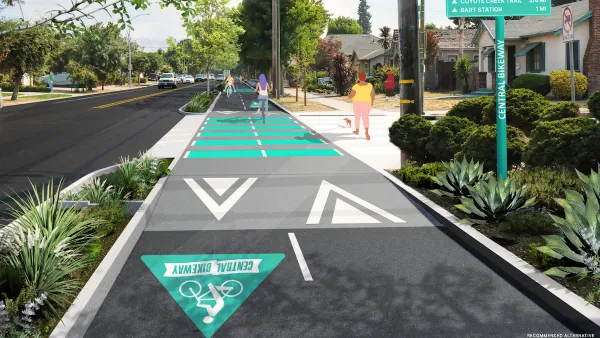Michael Storper and Patrick Condon opine on what California's population demographics really reveal about housing, density, economic development, jobs, and affordability.

In light of two recent columns published by the New York Times dragging California as the poster child for nearly every governance malady imaginable, but particularly housing, TPR invited economic geographer Michael Storper and Patrick Condon to respond to the NYT commentary and opine on what California's population demographics really reveal about housing, density, economic development, jobs, and affordability.
Both rebut the assumption that market-rate housing supply is the answer to correcting housing prices and wealth inequality. Condon concisely iterates the need for affordability requirements to check land price inflation while ensuring social benefit, and Storper emphasizes the role that shifting geography of jobs and wages plays in migration—not housing supply.
"Most of this has to do with the geography of jobs and wages, and is not caused by housing prices. Housing prices reflect and follow this reality, they have not caused this new geography." —Michael Storper
For the full excerpts, visit The Planning Report.

Planetizen Federal Action Tracker
A weekly monitor of how Trump’s orders and actions are impacting planners and planning in America.

Silicon Valley ‘Bike Superhighway’ Awarded $14M State Grant
A Caltrans grant brings the 10-mile Central Bikeway project connecting Santa Clara and East San Jose closer to fruition.

Amtrak Cutting Jobs, Funding to High-Speed Rail
The agency plans to cut 10 percent of its workforce and has confirmed it will not fund new high-speed rail projects.

Planting for Change: How Trees Are Powering Climate Action
"Combating Climate Change with Trees" highlights how Southern California communities are strategically planting and nurturing urban forests to cool neighborhoods, improve air quality, and advance environmental justice.

Could Planners Adopt a 'Place Sherpa' Role?
Building upon the framework of a local housing panel, Chuck Wolfe suggests that advocacy and policy discussions would be enhanced by a “sherpa mindset” that focuses on lived experiences, facilitates applied knowledge of urban places, and promotes stakeholder discussion.

California Advances Its 30x30 Conservation Goals
California is making significant progress toward its 30x30 conservation goals, but looming federal rollbacks and gaps in biodiversity protections could threaten the state’s efforts to protect lands and coastal waters by 2030.
Urban Design for Planners 1: Software Tools
This six-course series explores essential urban design concepts using open source software and equips planners with the tools they need to participate fully in the urban design process.
Planning for Universal Design
Learn the tools for implementing Universal Design in planning regulations.
Caltrans
City of Fort Worth
Mpact (founded as Rail~Volution)
City of Camden Redevelopment Agency
City of Astoria
City of Portland
City of Laramie





























